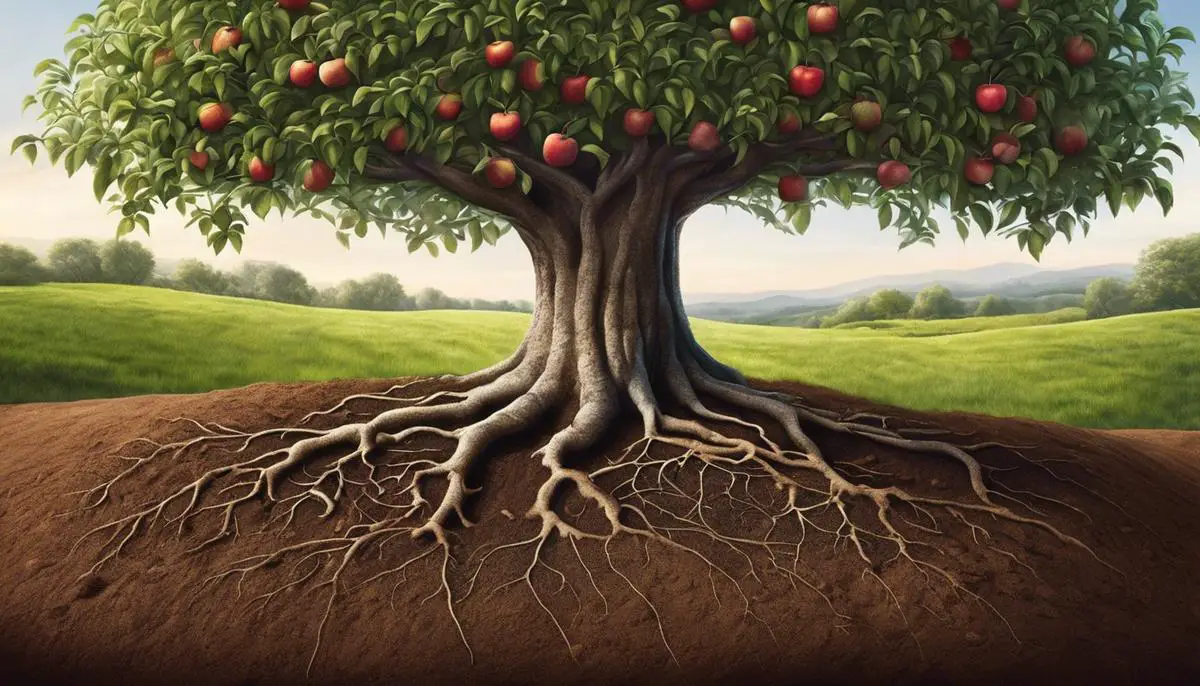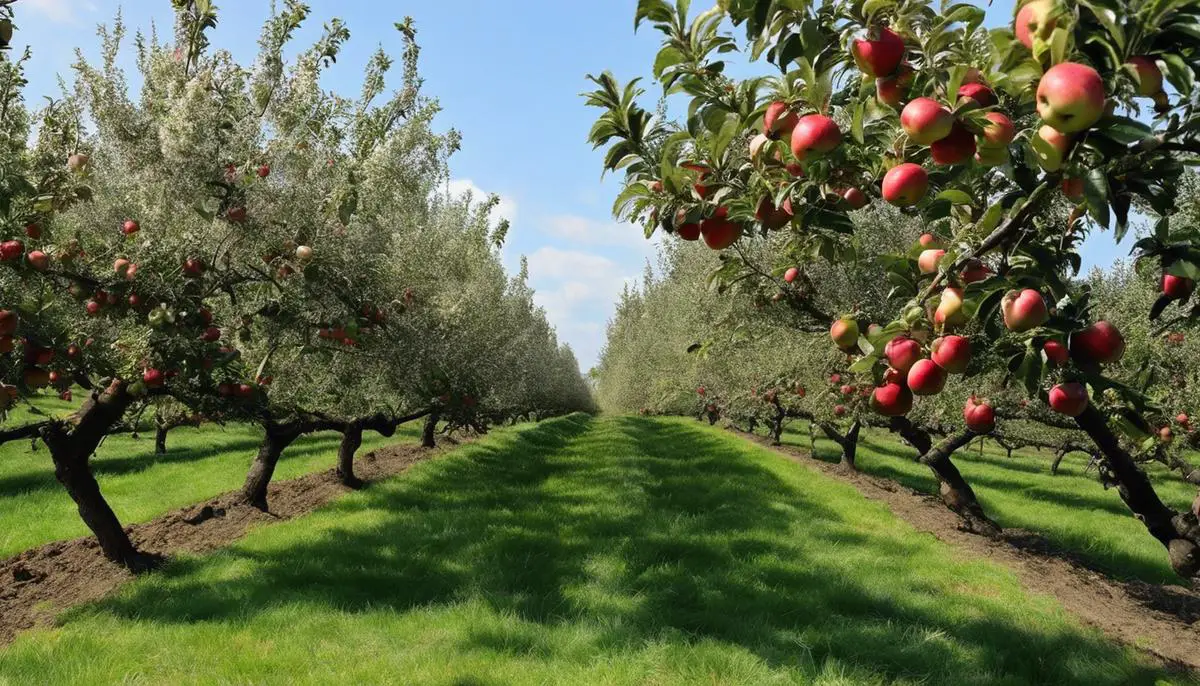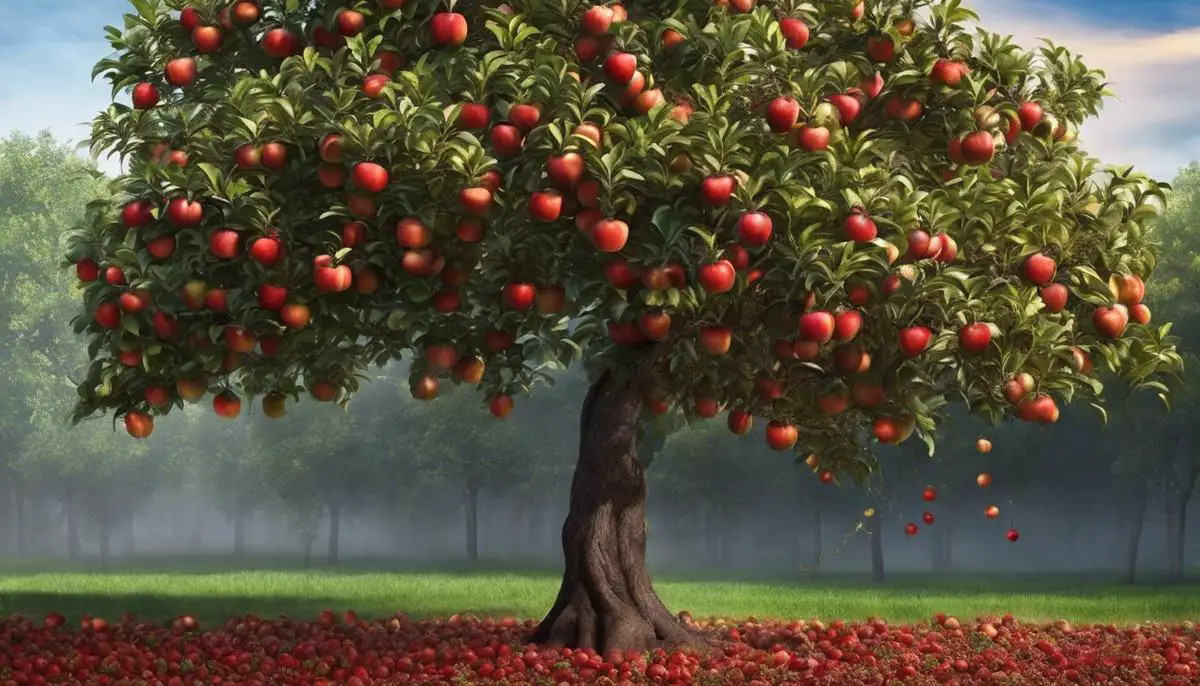Planting apple trees, a symbol of health and vitality, requires knowledge beyond simply placing a young tree in the ground. One must understand multiple factors to cultivate a fruitful apple tree, notably the type of soil. Focusing on clay soil, renowned for its unique properties, plays a significant role in the growth, health, and productivity of the tree. This document will discuss the nature and impacts of clay soil on apple trees, the right choice of apple varieties for such soil, and a systematic guide to effectively prepare and plant them in clay grounds.
Understanding Clay Soil and Its Impact on Apple Trees
Making the Most of Clay Soil: Grow Apple Trees Like a Pro
Hobbyist gardeners and apple tree enthusiasts know the importance of soil quality when it comes to successfully planting and nurturing a productive apple tree. Among all soil types, clay soil stands out as the crème de la crème for apple trees, playing a pivotal role in optimizing their growth and productivity.
Clay soil is unique because of its distinct structure and composition. Being dense and heavy, clay soil retains more water and nutrients. Almost like a rich nourishing soup for plants, except it’s under the surface.
The granular structure of the clay soil means the particles are tightly packed together, creating smaller pores. This trumps other soil types and ensures that water loss through percolation is minimal, and moisture is retained for longer periods. And for apple trees that enjoy a good drink, this is added hydration that keeps them flourishing.
Clay’s slow draining nature might give gardeners pause considering the risk of water logging. However, apple trees are known to have deep root systems, which are adequate to handle this unique characteristic. The benefit? Apple trees get more time to absorb water and nutrients, which translates into healthier and more robust trees.
The mineral composition of clay soil is another reason why it’s a robust booster for apple tree growth. Rich in essential nutrients like iron, calcium, potassium, and more, clay makes a magnificent reservoir of goodness for apple trees. With a steady supply of nutrients, apple trees growing in clay soil are more vibrant, resilient, and productive.
Clay soil’s knack for holding onto nutrients due to its cation-exchange capacity (CEC) is noteworthy. Closer to being a nutrient-storage unit, clay soil reduces the risk of nutrient leaching, ensuring that apple trees receive a sustained nutrient supply.
But what happens when clay soil becomes too compacted, a common concern when dealing with this type of soil? The solution lies in amendments. Adding organic matter, like compost or well-rotted manure, improves aeration and drainage. Organic matter is like a magic touch, transforming dense clay into a warmer, lighter, and fluffier mixture, the perfect concoction for apple trees.
When planting apple trees in clay soil, dig a hole larger than the root ball, backfill with a blend of clay and the organic amendment of choice. This initial step ensures the roots have a nutrient-rich environment to kick-start their growth, setting the pace for years of successful fruit-bearing.
Understanding clay soil’s unique characteristics is a game-changer for any hobbyist gardener, especially those with a fondness for apple trees! By appreciating the advantages that this dense, nutrient-rich soil type offers, apple tree planters can create an environment where these trees will not just survive but thrive. So, roll up those gardening sleeves and let clay soil be a worthy ally in the pursuit of successful apple tree cultivation!
Remember, an apple tree grown in clay soil isn’t just any tree—it’s a testament to an informed and successful gardening affair.

Right Choice of Apple Tree Varieties for Clay Soil
Title: The Best Apple Trees for Thriving Clay Soil
If you’ve been nurturing the green thumb within you, you’re versed on the importance of soil quality for any plantation. And if you’re adventurous enough to test the waters with apple tree growth – particularly in clay soil, then you’re in for an exciting journey.
Now, let’s shift gears and focus on the particular apple tree breeds that have proved themselves to be clay soil champions.
Clay soil is more of a friend than a foe to several apple tree varieties. The first you might want to consider is the ‘Antonovka’. Hailing from Russia, this apple tree variety is winter-hardy, and its resilience permits it to spread roots intensely deep into clay soil. The Antonovka variety is also known for producing large apples, perfect for pies and sauces.
The next variety on our list is the ‘Golden Delicious.’ It’s a universally recognized apple tree breed, known for its versatility not only in its fruit’s usage but also in its adaptability to varying soil types. Clay soil doesn’t phase the Golden Delicious – in fact, the clay’s ability to retain water and nutrients works to its advantage, helping it to produce juicy, sweet apples.
Moving forward, consider trying out the old-time favorite ‘Red Delicious.’ Like its golden variant, the Red Delicious has a proclivity to exist comfortably in clay soils, yielding bountiful harvests of its iconic, ruby-red apples.
Then we have the ‘Northern Spy.’ This apple tree variety is highly esteemed by baking enthusiasts for its acidic-taste that adds a pleasant tangy kick to desserts. Apart from its mouth-watering flavor profile, Northern Spy is known for growing well in clay soil, given its requirement for longer growing seasons and a preference for cooler climates.
Last but not least, ‘Braeburn’ apple trees grow remarkably well in clay soils. Originating from New Zealand, this breed enjoys the clay’s water-retaining properties and its capacity to make nutrients available for longer periods—an attribute clay soil is known due to its high cation-exchange capacity.
Whichever variety you choose, remember that amending the clay soil with organic matter will significantly enhance its structure and allow the apple trees to establish more robust root systems. Plus, grasping an in-depth understanding of your clay soil’s unique characteristics is your passport to successful apple tree cultivation.
One last thing, apple trees, like people, enjoy good company—be sure to consider companion planting to deter pests and diseases while improving pollination.
And there you have it–the scoop on apple tree varieties well-suited to clay soil. May your apple trees be plentiful and your harvest bountiful!

Preparation and Planting Process of Apple Trees in Clay Soil
While selecting the right breed of apple tree for clay soil is crucial, the manner in which the tree is planted is also of paramount importance. There are some steps and precautions which if followed, can significantly improve the chances of successful apple tree growth in clay soil.
- Size of the Planting Hole: When it comes to the planting hole, the adage “a $10 hole for a $5 tree” truly comes into play. In short, don’t skimp. The hole should be at least twice as wide and slightly deeper than the root system of the tree. This would aid in easy root expansion and establishment.
- Sufficient Drainage: Clay soil is known for its high-water holding capacity. While this is good for retaining moisture, it could lead to waterlogging if not appropriately managed. The planting hole should be designed such that excess water can easily drain off.
- Incorporating Grit: Mixing grit into the clay soil improves its structure, enhancing aeration and drainage. Incorporating about a third volume of grit to the planting hole can be particularly beneficial.
- Root Preparation: Before planting your apple tree, it’s essential to inspect and prepare the roots. Untangle any circled roots and trim those that are broken. This encourages healthy growth and prevents root-related issues in the future.
- Tree Placement: The graft union of the apple tree should always be above the soil surface to prevent it from growing into a fully-sized tree. Make sure that the tree is placed in such a way that this union is visible.
- Soil Backfill: After placing the tree, backfill the hole with the original clay soil. Remember not to pack the soil too tightly. Keeping it loose encourages root growth.
- Mulching: Mulching around the apple tree can protect it from extreme temperature variations and help retain soil moisture. Be sure not to mulch too close to the trunk as this can invite pests and diseases.
It’s also worth noting that companion planting can be an effective way to control pests naturally and promote pollination. Plants such as chives, dill, and garlic can repel pests, while flowering plants such as wildflowers and marigolds attract pollinators.
Being mindful of these steps and precautions can go a long way in ensuring the successful growth of your apple tree in clay soil. Remember, every tree is a long term investment, and a properly planted tree definitely reaps sweet rewards. Keep nurturing your passion for apple tree planting, and you’ll soon have flourishing trees that’ll be the talk of the town.
Happy planting!

Understanding, preparing, and planting apple trees in clay soil can be a rewarding journey. As we grapple with the challenges of clay soil, selecting the right apple variety and diligently following through with soil preparation and planting process, we increase the probability of successful cultivation significantly. Over time, the rightful manipulation and dedication to these methods and techniques can turn your clay soil into a fertile ground for healthy, productive apple trees. Every fruitful harvest serves as a testimony to the effort and understanding applied to apple tree cultivation in clay soil. This is a testament to the beauty of nature and human effort working hand in hand.
